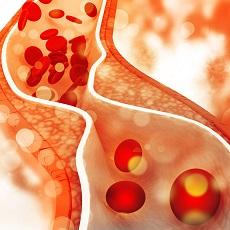Cholesterol
is a waxy substance found in the blood, essential for building healthy
cells. However, when its levels are too high, it can become a risk factor for heart
diseases. It is essential to understand between the two main types of
cholesterol: LDL (low-density lipoproteins) and HDL (high-density
lipoproteins), and how each affects health.
LDL: The bad cholesterol
LDL is a low-density lipoprotein commonly known as the “bad cholesterol”. This is because elevated levels of LDL can lead to cholesterol buildup in the arteries, which in turn can result in the formation of plaques.
These plaques can narrow the arteries or even block them completely, increasing the risk of atherosclerosis, heart attacks and strokes.
Therefore, keeping LDL levels under control is essential for cardiovascular health. Treatment guidelines vary depending on individual risk, but generally include lifestyle modifications such as a healthy diet rich in fruits, vegetables, whole grains, and low in saturated and trans fats, as well as regular exercise and maintaining a healthy weight. In some cases, the use of medications, such as statins or some probiotics, may also be necessary to help reduce LDL levels.
HDL: The good cholesterol
Unlike LDL, HDL is a high-density lipoprotein known as the “good cholesterol” because it helps remove other forms of cholesterol from the bloodstream. HDL is responsible for transporting cholesterol from other parts of the body back to the liver, where it can be processed and eliminated from the body, thus eliminating excess cholesterol in cells, tissues and plaques from blood vessels.
High levels of HDL are associated with a lower risk of heart disease, while low levels are linked to an increased risk. To increase HDL levels, it is recommended to adopt an active lifestyle, including regular exercise, maintaining a healthy weight, and a diet rich in healthy fats, such as those found in fish, nuts, and vegetable oils
Treatment and Control of Cholesterol
Cholesterol treatment involves a combination of lifestyle changes and, when necessary, medication. Adopting a heart-healthy diet is one of the recommended first steps. This includes limiting the intake of foods high in cholesterol, saturated and trans fats, while increasing the consumption of dietary fiber and omega-3 fatty acids.
Regular exercise is another crucial component, as it not only helps improve HDL levels, but can also contribute to weigh loss and improve overall heart health. For those who require medication, statins are the most common type of medication prescribed to help lower LDL levels. Other medications include cholesterol absorption inhibitors, ion exchange resins (medications that bind to bile acids in the intestine, preventing their absorption and promoting their excretion, resulting in a decrease in LDL cholesterol levels), and fibrates (a class of medication which increases lipoprotein lipase activity and promotes degradation of LDL and triglycerides. They also include HDL synthesis, leading to an increase in HDL cholesterol levels and a decrease in triglyceride levels).
There
are also some probiotics, such as Lactobacillus
plantarum, that have proven their effectiveness in reducing the cholesterol.
Lactobacillus Acidophilus, that reduce the cholesterol
levels by binding to cholesterol in the intestines, reducing its absorption,
and promoting its excretion in the feces. Lactobacillus reuteri decrease
cholesterol absorption in the intestine and promoting its excretion in the
feces. It is also been shown to be effective in strengthening the immune
system, improving digestion and protecting against intestinal diseases. Another
strain of L. reuteri has been found to contribute to normal vitamin
D production and the maintenance of normal cholesterol levels, making it a
promising option for improving cardiovascular health.

These probiotics contribute reducing blood cholesterol levels through various mechanisms, such as decreasing cholesterol absorption, fragmenting bile salts, sequestering cholesterol in the membrane of the probiotic bacteria, blocking cholesterol synthesis in the liver, and increasing the ratio HDL/LDL.
Conclusion
Understanding the difference between LDL and HDL and how each effects cardiovascular health is crucial to the prevention and treatment of heart disease. Through lifestyle changes and, when necessary, dietary supplements such the probiotics which reduces the absorption of cholesterol, increase the excretion of cholesterol in the feces and block the synthesis of cholesterol in the liver, leads to a decrease of LDL- C and an increase of HDL- C, being possible to effectively manage cholesterol levels and significantly reduce the risk of cardiovascular complications. As always, it is important to work closely with a healthcare professional to determine the best action´s plan for each individual health.
Bibliography references:
- PMED: 37193478 “The effects of probiotics on Cholesterol levels in patients with metabolic syndrome: A systematic review”
https://www.ncbi.nlm.nih.gov/pmc/articles/PMC10183154/
- PMED: “Effects of probiotic supplementation on cardiovascular risk factors in hypercholesterolemia: A systematic review and meta-analysis of randomized clinical trial”
https://www.sciencedirect.com/science/article/pii/S1756464620304011